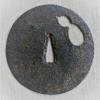-
Posts
5,975 -
Joined
-
Last visited
-
Days Won
19

ROKUJURO replied to Crusader7781's topic in Auctions and Online Sales or Sellers

ROKUJURO replied to dignanimity's topic in General Nihonto Related Discussion

ROKUJURO replied to CowboyVittles's topic in Military Swords of Japan

ROKUJURO replied to sleepy_hue's topic in Military Swords of Japan

ROKUJURO replied to Slimsmiple's topic in Auctions and Online Sales or Sellers

ROKUJURO replied to Slimsmiple's topic in Auctions and Online Sales or Sellers

ROKUJURO replied to mackiejamie's topic in Nihonto

ROKUJURO replied to Lewis B's topic in General Nihonto Related Discussion

ROKUJURO replied to Andygw's topic in General Nihonto Related Discussion

ROKUJURO replied to Alex A's topic in General Nihonto Related Discussion

